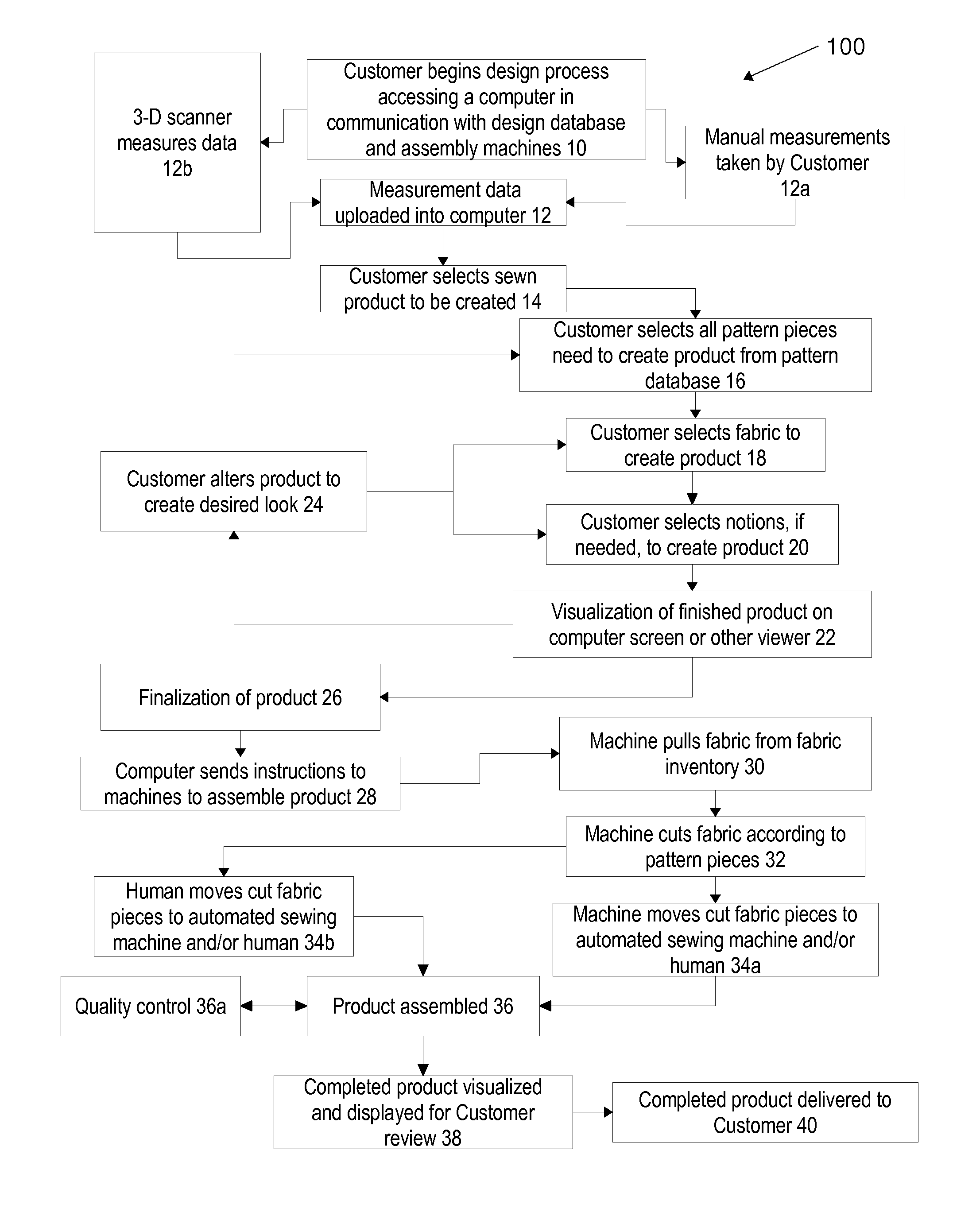Method for Automated Design and Assembly of Customized Apparel and Other Sewn Products
a technology of sewn products and garment workers, applied in the direction of instruments, buying/selling/leasing transactions, data processing applications, etc., can solve the problems of high cost of haute couture, inability to afford haute couture, and inability to customize clothing, so as to achieve automatic design and assembly
- Summary
- Abstract
- Description
- Claims
- Application Information
AI Technical Summary
Benefits of technology
Problems solved by technology
Method used
Image
Examples
Embodiment Construction
[0016]An embodiment of the method for automated design and assembly of customized apparel and other sewn products is shown in FIG. 1.
[0017]Looking now at FIG. 1, the method for automated design and assembly of customized apparel and other sewn products 100 commences by a customer accessing a computer in communication with a pattern database and a plurality of machines used to assemble a garment or other sewn product 10. It should be noted that “computer” here includes smartphones, and other devices in communication, wired or wirelessly, with the pattern database and the plurality of machines, and which either includes a screen for visualizing the selections, patterns, etc. and / or is in communication, wired or wirelessly, with a screen capable of visualizing the selections, etc. made by the customer. The desired measurement data is uploaded into the computer 12, either manually by the customer 12a, or alternatively, by a three-dimensional scanning machine in communication with the co...
PUM
 Login to View More
Login to View More Abstract
Description
Claims
Application Information
 Login to View More
Login to View More - R&D
- Intellectual Property
- Life Sciences
- Materials
- Tech Scout
- Unparalleled Data Quality
- Higher Quality Content
- 60% Fewer Hallucinations
Browse by: Latest US Patents, China's latest patents, Technical Efficacy Thesaurus, Application Domain, Technology Topic, Popular Technical Reports.
© 2025 PatSnap. All rights reserved.Legal|Privacy policy|Modern Slavery Act Transparency Statement|Sitemap|About US| Contact US: help@patsnap.com


